Ranthambore Travel Information, located in the eastern part of Rajasthan, India, is a popular destination for wildlife enthusiasts and nature lovers. Spread across an area of approximately 400 square kilometers, Ranthambore National Park is one of the largest and most renowned national parks in Northern India. It is home to a diverse range of flora and fauna, including the majestic Royal Bengal Tigers, making it a must-visit place for wildlife enthusiasts.
The main attraction of Ranthambore is undoubtedly its thriving tiger population. The park provides a unique opportunity to witness these magnificent creatures in their natural habitat. Visitors can embark on thrilling jeep and canter safaris that take them deep into the wilderness, offering the chance to spot tigers, leopards, sloth bears, deer, and various species of birds. The sight of a tiger prowling through the dense foliage is an unforgettable experience.
Apart from the tigers, Ranthambore is also famous for its historical landmarks. The Ranthambore Fort, a UNESCO World Heritage Site, is an architectural marvel that dates back to the 10th century. It stands atop a hill and offers panoramic views of the surrounding landscape. Exploring the fort’s grand structures, temples, and ancient ruins is a treat for history buffs.
The park is open from October to June, with the best time to visit being during the winter months when the weather is pleasant and wildlife sightings are more frequent. Ranthambore also offers a range of accommodation options, including luxury resorts and budget-friendly guesthouses, ensuring a comfortable stay for all types of travelers Ranthambore Travel Information.
Beyond wildlife and history, Ranthambore also provides opportunities for adventure and relaxation. Visitors can enjoy nature walks, bird watching, and photography sessions amidst the serene surroundings. The park is also close to the picturesque Ranthambore Lake, where one can enjoy a peaceful boat ride or simply soak in the tranquil atmosphere.
In conclusion, Ranthambore is a fascinating destination that offers a perfect blend of wildlife, history, and natural beauty. Whether you are an animal lover, a history enthusiast, or simply seeking a peaceful getaway, Ranthambore Tour Packages has something to offer for everyone. Plan your visit to Ranthambore and embark on an unforgettable journey into the heart of nature.
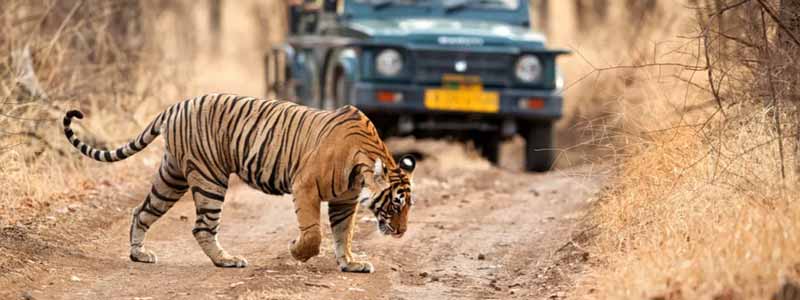
History of Ranthambore
The history of Ranthambore is rich and dates back to ancient times. The region’s name is believed to have been derived from two hills: Ran and Thanbhor, which form a part of the Ranthambore National Park’s landscape. Throughout the centuries, Ranthambore has witnessed the rise and fall of various dynasties, leaving behind a legacy of historical significance and cultural heritage.
Ancient Era: The region around Ranthambore has traces of human settlements dating back to the prehistoric era. Archaeological findings suggest that the area was inhabited by the Bhil tribes and later by the Hada Rajputs. The Hadas established themselves in the region during the 8th century.
Chauhan Dynasty: Ranthambore gained prominence during the rule of the Chauhan dynasty, who ruled over the region from the 10th to the 13th century. The Ranthambore Fort, which stands majestically within the national park, was constructed during this period. The fort served as a strategic stronghold and witnessed several battles, including the invasions of the Delhi Sultanate.
Delhi Sultanate: In the 13th century, Ranthambore fell under the rule of the Delhi Sultanate when the Chauhan king, Hamir Dev, faced defeat at the hands of Alauddin Khilji. The fort was besieged multiple times during this era, showcasing its significance as a formidable fortification.
Mughal Empire: With the decline of the Delhi Sultanate, Ranthambore became a part of the Mughal Empire. Emperors like Akbar and Aurangzeb recognized the strategic importance of the fort and utilized it as a base for their military operations.
Maharajas of Jaipur: In the 17th century, Ranthambore was taken over by the Kachwaha Maharajas of Jaipur. The fort and the surrounding areas were considered a hunting ground for the royals, and they actively participated in wildlife conservation, which laid the foundation for Ranthambore’s future as a protected area.
British Colonial Era: During the British colonial rule in India, Ranthambore was maintained as a hunting reserve for the British officers and Maharajas. Hunting in the area posed a significant threat to the wildlife, leading to the establishment of conservation efforts and restrictions.
Post-Independence: After India gained independence in 1947, the hunting activities in Ranthambore were gradually curtailed, leading to the declaration of the area as the Sawai Madhopur Game Sanctuary in 1955. Later, in 1973, it was declared one of the country’s first Tiger Reserves, and in 1980, it was given the status of a national park, now known as Ranthambore Travel Information.
Today, Ranthambore stands as a symbol of India’s commitment to wildlife conservation and attracts tourists from all over the world to witness the beauty of its natural heritage and the royal magnificence of the Ranthambore Fort. The history and wildlife of Ranthambore come together to create a truly unique and mesmerizing destination.
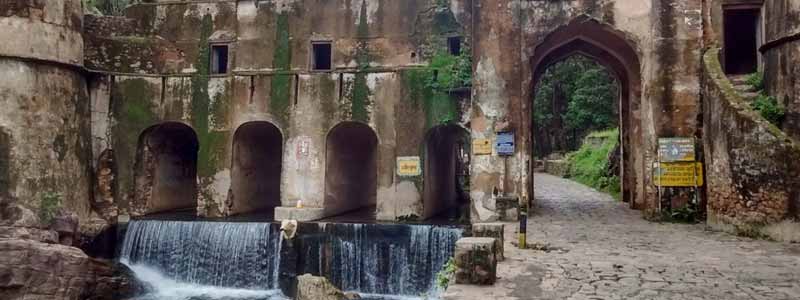
Places to Visit in Ranthambore
Ranthambore offers a wealth of attractions for visitors, combining its natural beauty with historical and cultural sites. Here are some of the top places to visit in Ranthambore:
Ranthambore National Park: The star attraction of the region, Ranthambore National Park is a haven for wildlife enthusiasts. Embark on a thrilling safari ride to spot the majestic Bengal tigers, along with leopards, sloth bears, sambar deer, and a variety of bird species. The park’s diverse landscapes of forests, lakes, and hills create a stunning backdrop for wildlife sightings.
Ranthambore Fort: Dominating the landscape, Ranthambore Fort is an architectural marvel that stands as a testament to the region’s rich history. Built during the Chauhan dynasty, the fort offers panoramic views of the surrounding landscapes and provides a glimpse into the lives of the rulers who once held sway over the region.
Surwal Lake: Located near Ranthambore National Park, Surwal Lake is a serene and picturesque spot. It attracts a wide range of migratory birds, making it a paradise for birdwatchers. Enjoy a peaceful boat ride on the lake while observing the vibrant avian species in their natural habitat.
Padam Talao: Padam Talao is one of the largest lakes within Ranthambore National Park and is famous for its scenic beauty. It is an ideal spot for wildlife photography, as it offers opportunities to capture stunning reflections of the fort and wildlife, especially during sunrise and sunset.
Jogi Mahal: Situated near Padam Talao, Jogi Mahal is a historic guesthouse that now serves as a forest department rest house. It is known for its picturesque location and offers a great view of the lake. The famous landmark in Jogi Mahal is the Banyan Tree, which is believed to be the second-largest banyan tree in India.
Kachida Valley: Located in the outskirts of Ranthambore National Park, Kachida Valley is a scenic and tranquil spot. The valley is characterized by rugged terrain, rocky outcrops, and dense vegetation, making it an ideal habitat for wildlife. It offers an opportunity for nature walks and offers breathtaking views of the surroundings.
Raj Bagh Ruins: Situated within Ranthambore National Park, the Raj Bagh Ruins are the remnants of ancient structures, including palaces and step wells. These ruins add an element of mystery and intrigue to the park and are a favorite spot for history enthusiasts and photographers.
Trinetra Ganesh Temple: Located within the Ranthambore Fort, Trinetra Ganesh Temple is a popular pilgrimage site. It is dedicated to Lord Ganesha and holds great religious significance for the locals. The temple attracts a large number of devotees, especially during festivals.
Village Safari: To experience the local rural life and immerse yourself in the vibrant culture of Rajasthan, take a village safari around the villages surrounding Ranthambore. Interact with the locals, witness traditional art forms, and savor the authentic Rajasthani cuisine.
These are just a few of the many attractions Ranthambore has to offer. The blend of wildlife, natural beauty, and historical sites make it a captivating destination that caters to a wide range of interests.
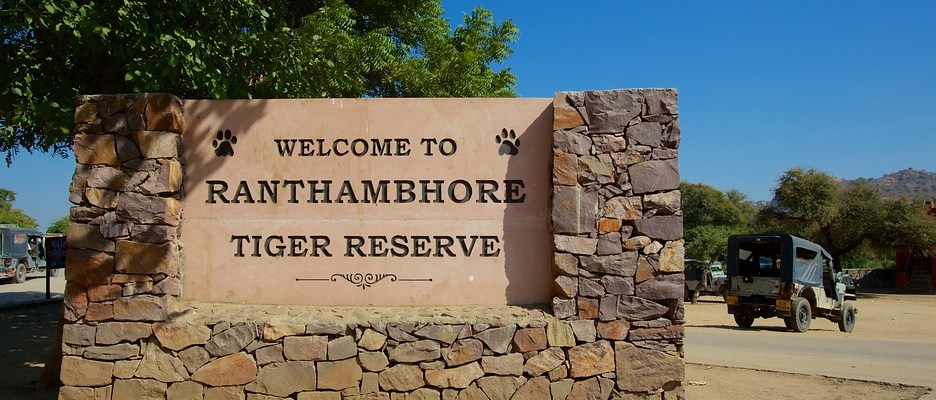
Famous Shopping Markets in Ranthambore
Ranthambore may be known for its wildlife and historical sites, but it also offers some shopping opportunities for visitors to indulge in. Here are a few famous shopping markets in and around Ranthambore:
Sawai Madhopur Market: The main market in Sawai Madhopur, the town near Ranthambore, is a bustling hub where you can find a variety of local products. From traditional Rajasthani textiles and handicrafts to jewelry, pottery, and leather goods, the market offers a wide range of shopping options. Don’t forget to bargain for the best prices.
Rajiv Gandhi Handicrafts Emporium: Located near the Ranthambore National Park, this government-run emporium showcases an impressive collection of local handicrafts and handloom products. You can find intricately designed textiles, carpets, woodwork, paintings, and other traditional crafts. It’s a great place to support local artisans and take home unique souvenirs.
Dastkar Ranthambore: Situated near the Sherpur Gate of Ranthambore National Park, Dastkar Ranthambore is a cooperative society that promotes rural artisans and their crafts. Here, you can find a range of handcrafted products such as block-printed fabrics, quilts, bags, and accessories. The proceeds from the sales directly benefit the local artisans.
Ranthambore School of Art: For art enthusiasts, a visit to the Ranthambore School of Art is a must. This unique art school encourages the talent of local villagers and showcases their artwork. You can purchase beautiful paintings depicting wildlife, nature, and Rajasthani culture, supporting the local artists in the process.
Craft Village: Situated near Ranthambore National Park, Craft Village is a community-based initiative that promotes traditional crafts and provides livelihood opportunities to the local villagers. The village offers a range of handmade products, including pottery, textiles, jewelry, and paintings. You can observe the artisans at work and even participate in workshops to learn about traditional craft techniques.
Local Shops and Bazaars: Exploring the local streets and bazaars near Ranthambore National Park can be a delightful shopping experience. You’ll come across small shops selling Rajasthani textiles, colorful turbans, embroidered garments, camel leather products, silver jewelry, and other handicrafts. It’s a chance to interact with the locals and get a glimpse of their daily lives.
Remember to bargain and compare prices before making a purchase. Supporting local artisans and buying traditional crafts helps preserve the region’s cultural heritage and sustains the local economy.
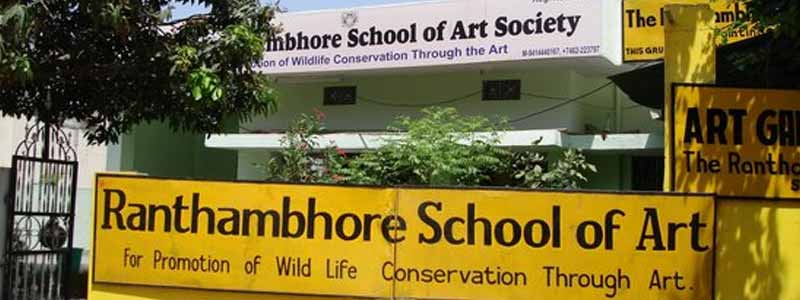
Festivals of Ranthambore
Ranthambore, situated in the vibrant state of Rajasthan, India, is known for its colorful and lively festivals that showcase the region’s rich cultural heritage. Here are some of the major festivals celebrated in Ranthambore:
Gangaur Festival: Gangaur is one of the most important festivals in Rajasthan, and it is celebrated with great enthusiasm in Ranthambore. Dedicated to the Hindu goddess Gauri, the festival honors marital bliss and conjugal harmony. Women dress in traditional attire, adorn themselves with jewelry, and carry beautifully decorated clay pots on their heads. The festival involves vibrant processions, singing, dancing, and various cultural activities.
Teej Festival: Teej is a monsoon festival celebrated by women to honor the union of Lord Shiva and Goddess Parvati. Married and unmarried women dress in green traditional attire and participate in processions, swings, folk dances, and music performances. The festival is marked by fasting, prayers, and a lot of merriment Ranthambore Travel Information.
Holi: Holi, the festival of colors, is celebrated with great zest and fervor in Ranthambore. People gather to play with vibrant colors, throw water balloons, and enjoy traditional music and dance. It is a time of joyous celebrations and socializing, where people come together to share sweets and special Holi delicacies.
Diwali: Diwali, the festival of lights, is celebrated throughout India, and Ranthambore is no exception. The town lights up with countless lamps and decorative lights, creating a magical atmosphere. People burst fireworks, exchange sweets and gifts, and decorate their homes with colorful rangolis. The festival signifies the victory of light over darkness and is a time for family gatherings and festivities.
Navaratri: Navaratri, meaning “nine nights,” is a significant Hindu festival dedicated to the worship of the goddess Durga. It involves nine nights of fasting, prayer, and dance performances. The festival culminates with Dussehra, symbolizing the triumph of good over evil. In Ranthambore, locals participate in Garba and Dandiya Raas, traditional folk dances performed in colorful attire.
Makar Sankranti: Makar Sankranti marks the transition of the sun into the zodiac sign of Capricorn. It is celebrated with kite flying, especially in the town of Sawai Madhopur near Ranthambore. The sky becomes filled with vibrant kites of various shapes and sizes, and people engage in friendly kite-flying competitions. Traditional sweets like til ladoo and gajak are also enjoyed during this festival.
These festivals offer a glimpse into the cultural fabric of Ranthambore and provide an opportunity for locals and tourists to come together and celebrate with joy and harmony. Participating in these festivals allows visitors to experience the vibrant traditions and warm hospitality of the region.
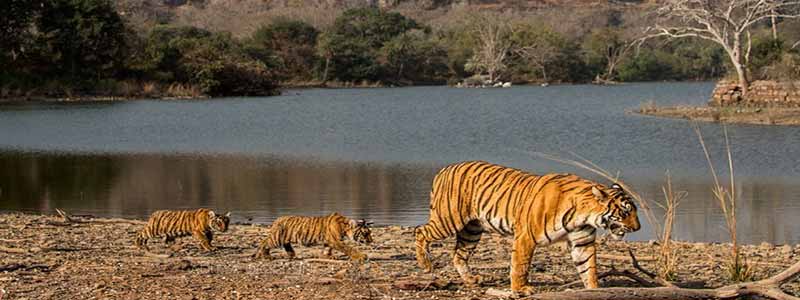
Best Time to Visit Ranthambore
The best time to visit Ranthambore is during the winter months, from October to March. Here’s a breakdown of the different seasons and what they offer:
Winter (October to March): This is considered the peak tourist season in Ranthambore due to the pleasant weather. The temperature during the daytime ranges from 20 to 30 degrees Celsius (68 to 86 degrees Fahrenheit) and drops to around 8 to 15 degrees Celsius (46 to 59 degrees Fahrenheit) at night. The weather is relatively dry and comfortable, making it ideal for wildlife safaris and exploring the Ranthambore Fort. The park remains open during this time, and chances of spotting tigers and other wildlife are higher as animals gather near water sources. It’s advisable to carry warm clothing for early morning and evening safaris.
Summer (April to June): The summer season in Ranthambore is hot, with temperatures soaring up to 45 degrees Celsius (113 degrees Fahrenheit) during the day. The scorching heat can make wildlife sightings challenging as animals tend to take shelter in the shade. However, this is the best time for birdwatching, as many migratory birds visit the region during this season. If you plan to visit during summer, it’s recommended to carry lightweight and breathable clothing, a hat, sunscreen, and stay hydrated.
Monsoon (July to September): Ranthambore experiences moderate to heavy rainfall during the monsoon season. The park remains closed from July to September due to safety concerns and the breeding season of animals. The landscape becomes lush and green, offering a different perspective, but wildlife sightings are minimal. However, if you enjoy the serene ambiance and don’t mind occasional showers, you can visit during this time. It’s important to check the park’s opening dates and accessibility before planning a trip.
Considering the pleasant weather and increased wildlife sightings, the winter season is the most recommended time to visit Ranthambore Travel Information. However, it’s advisable to make advance bookings for accommodations and safari tours, as this is the peak tourist season.
How to Reach Ranthambore
Ranthambore is well-connected to various cities in India by air, rail, and road. Here are the different ways to reach Ranthambore:
By Air: The nearest airport to Ranthambore is the Sanganer Airport in Jaipur, which is approximately 160 kilometers away. Jaipur Airport is well-connected to major cities in India, including Delhi, Mumbai, Kolkata, and Bangalore. After arriving in Jaipur, you can hire a taxi or take a bus to reach Ranthambore, which takes around 3-4 hours.
By Train: The nearest railway station to Ranthambore is Sawai Madhopur Railway Station, which is well-connected to major cities like Delhi, Mumbai, Jaipur, and Kolkata. Several trains, including the Rajdhani Express and Shatabdi Express, have stops at Sawai Madhopur. Once you reach the railway station, you can hire a taxi or take a local bus to reach Ranthambore, which is approximately 15 kilometers away.
By Road: Ranthambore is accessible by road from various cities and towns in Rajasthan and neighboring states. National Highway 52 connects Ranthambore to Jaipur and Agra. You can hire a taxi or take a bus from Jaipur, which is about 160 kilometers away, or from Agra, which is approximately 280 kilometers away. Additionally, there are regular bus services from nearby towns like Sawai Madhopur and Kota to Ranthambore.
Once you reach Ranthambore, you can explore the town and visit Ranthambore National Park and the historic Ranthambore Fort. To explore the national park, you need to book a safari in advance, as only a limited number of vehicles are allowed inside the park each day. It’s recommended to plan your trip to Ranthambore during the winter months (October to March) when the weather is pleasant and wildlife sightings are more frequent Ranthambore Travel Information.








